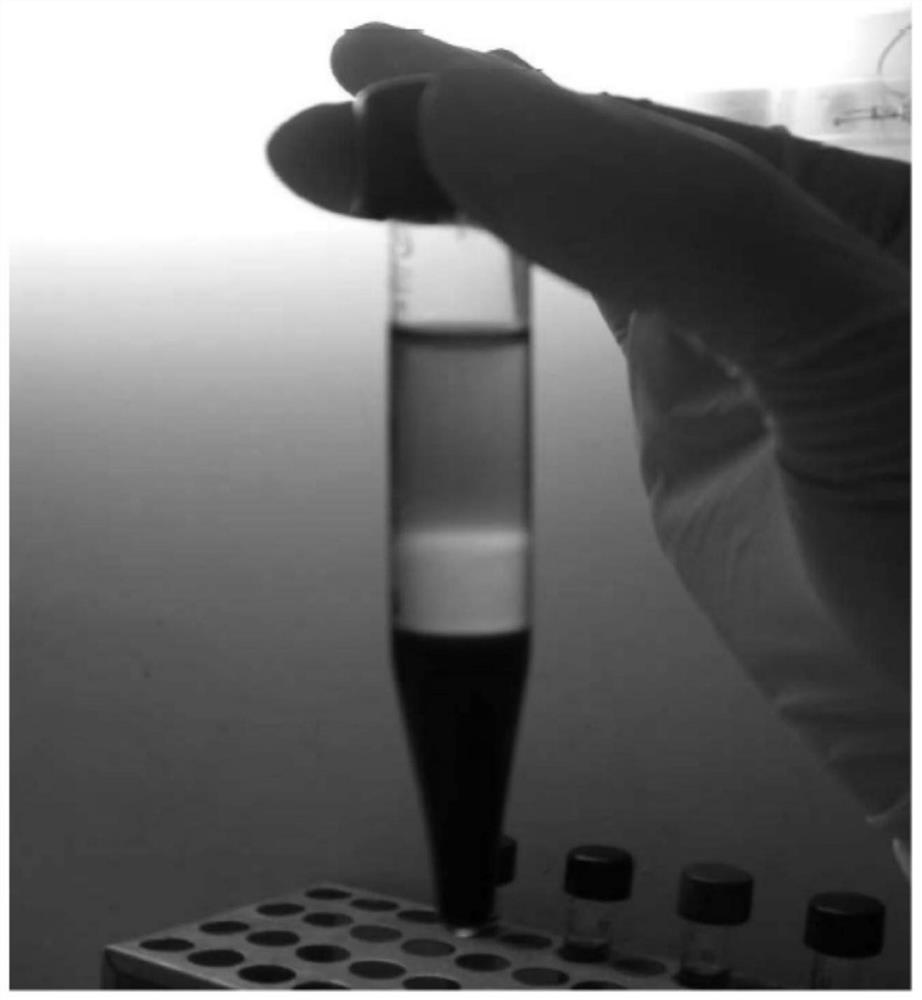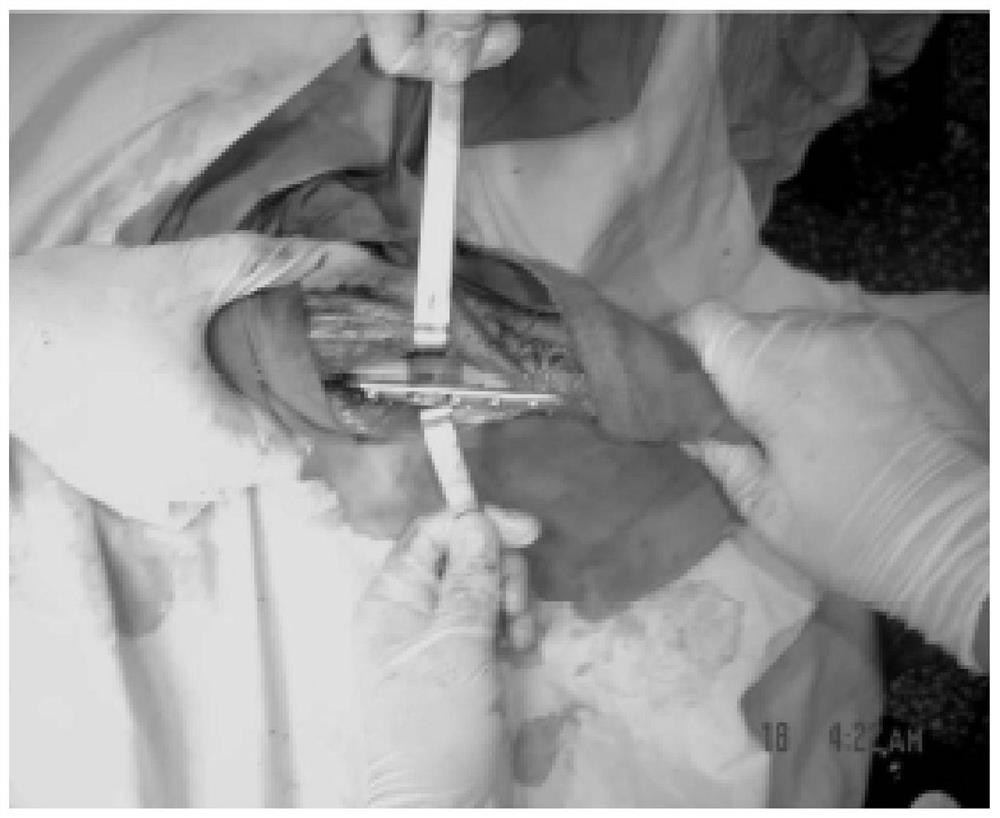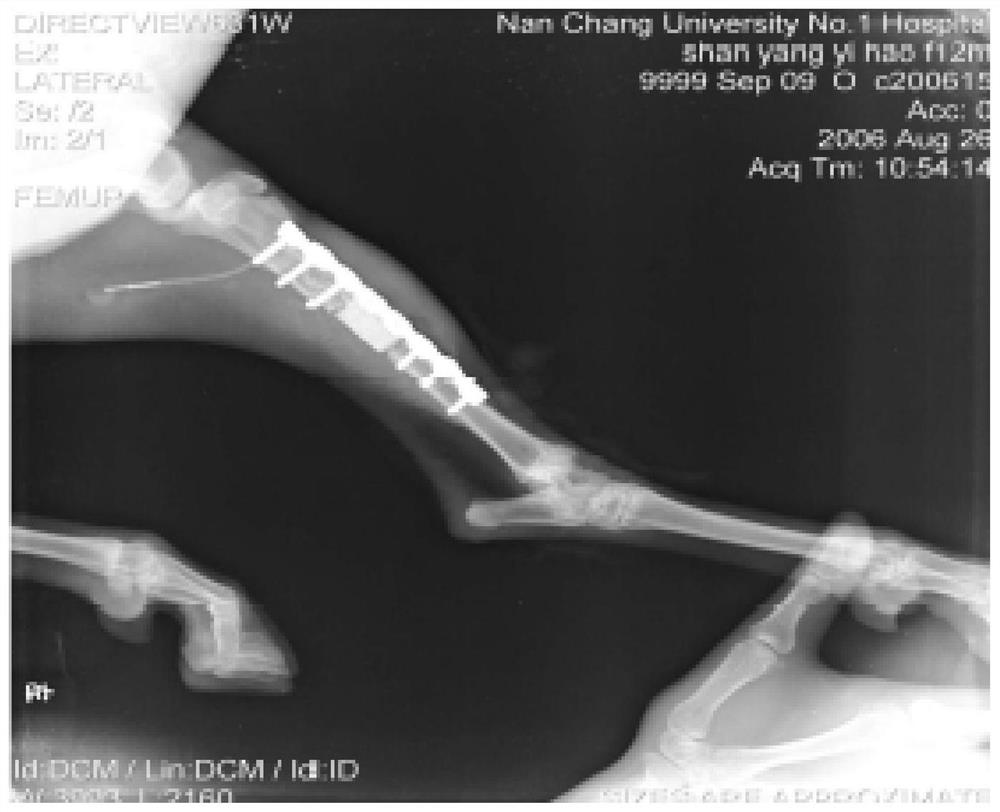Stem-cell perfusion nutrient solution for in-vivo tissue and organ regeneration and application method of stem-cell perfusion nutrient solution
A tissue organ and stem cell technology, applied in the direction of bone/connective tissue cells, tissue culture, cell culture active agent, etc., can solve problems such as imperfection and slow bone formation
- Summary
- Abstract
- Description
- Claims
- Application Information
AI Technical Summary
Problems solved by technology
Method used
Image
Examples
Embodiment 1
[0029] A stem cell perfusion nutrient solution for the regeneration of tissues and organs in the body, the raw materials include: 1×10 bone marrow stromal stem cells 6 ~1×10 7 1 / ml, recombinant human basic fibroblast growth factor 2ng / ml, human recombinant bone morphogenetic protein 25ng / ml, dexamethasone 0.25~1.0mg / ml, vitamin D3 1~2mg / ml.
[0030] Bone marrow stromal stem cells are obtained in the following ways:
[0031] S1: Use a syringe containing heparin anticoagulant to obtain 200ml of bone marrow blood, and put the obtained bone marrow blood into a medical sterile blood collection bag for backup;
[0032] S2: Mix the bone marrow blood with an equal volume of PBS, and let it stand at room temperature for 30 minutes, absorb the Percol l solution with a density of 1.073g / ml, and make the ratio of the separated liquid to 1:1; use a horizontal centrifuge at 2000r / min Centrifuge for 20-40 minutes, so that the liquid in the centrifuge tube is divided into three layers from ...
Embodiment 2
[0037] A method for applying stem cell perfusion nutrient solution for tissue and organ regeneration in vivo, comprising the steps of:
[0038] Step (1) Use a syringe to draw stem cell perfusion nutrient solution (which contains bone marrow stromal stem cells) used for regeneration of tissues and organs in the body and pour it into the Porite coral scaffold, and ensure complete infiltration and no leakage to form bone marrow stromal stem cells (BMSC)-Porite Coral scaffold (CN) complex;
[0039] Step (2) will place the bone marrow stromal stem cells-Porites scaffold complex (BMSC-CN) at 37 degrees Celsius with a volume fraction of 5% CO 2 After 5 hours in the incubator, DMEM complete medium was added for culture, and the bone marrow stromal stem cells-Porite coral scaffold complex was cultured for 5 days. After the bone marrow stromal stem cells and Porite coral scaffolds were firmly attached, they were implanted back into the bone defect.
[0040] In this embodiment, the stru...
Embodiment 3
[0050] The difference between embodiment three and embodiment one is that, as attached Figure 4 As shown, in the present embodiment, the coral support 11 made of Porites is improved, and some contact grooves 13 are provided on the side wall of the coral support 11, and the contact grooves 13 and the coral support 11 are in a smooth transition, and the through holes 12 of the coral support It is tapered, that is, the upper diameter of the through hole is larger than the lower diameter.
[0051] The specific implementation process is as follows:
[0052] In the present embodiment, the contact groove 13 arranged on the periphery of the coral support 11, the contact groove 13 increases the surface area of the coral support 11, and then provides a larger surface area for the attachment and proliferation of bone cells, thereby making the proliferation of bone cells more effective. Big.
[0053] As in Example 2, the subcutaneous implantable drug delivery device consists of two p...
PUM
 Login to View More
Login to View More Abstract
Description
Claims
Application Information
 Login to View More
Login to View More - R&D
- Intellectual Property
- Life Sciences
- Materials
- Tech Scout
- Unparalleled Data Quality
- Higher Quality Content
- 60% Fewer Hallucinations
Browse by: Latest US Patents, China's latest patents, Technical Efficacy Thesaurus, Application Domain, Technology Topic, Popular Technical Reports.
© 2025 PatSnap. All rights reserved.Legal|Privacy policy|Modern Slavery Act Transparency Statement|Sitemap|About US| Contact US: help@patsnap.com



